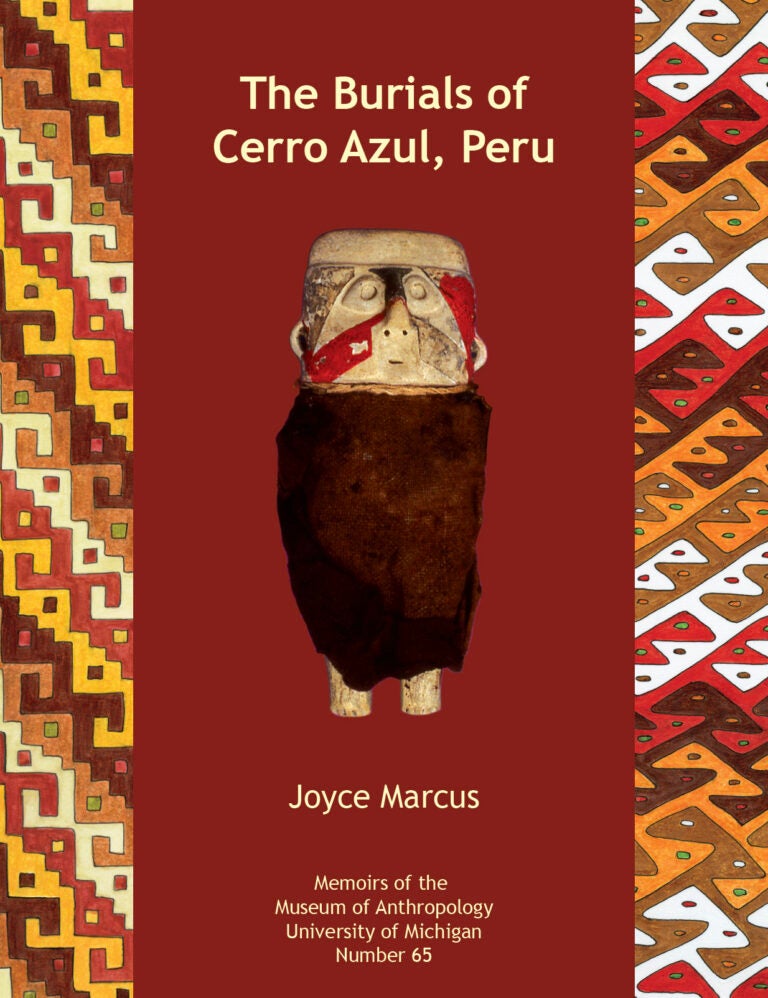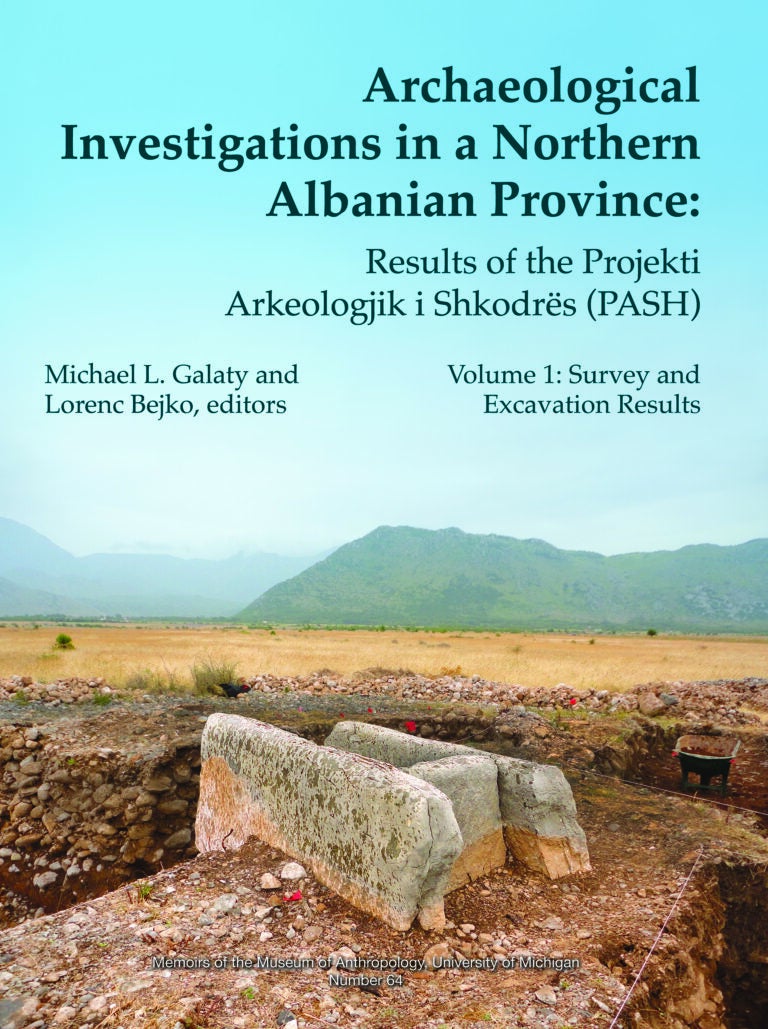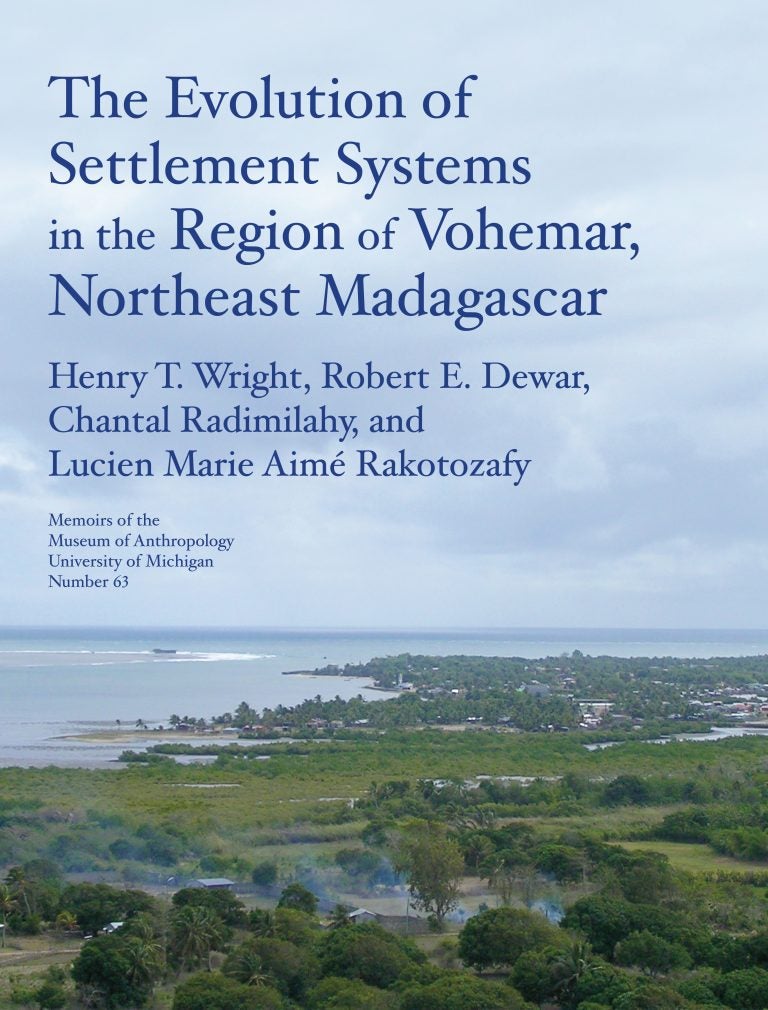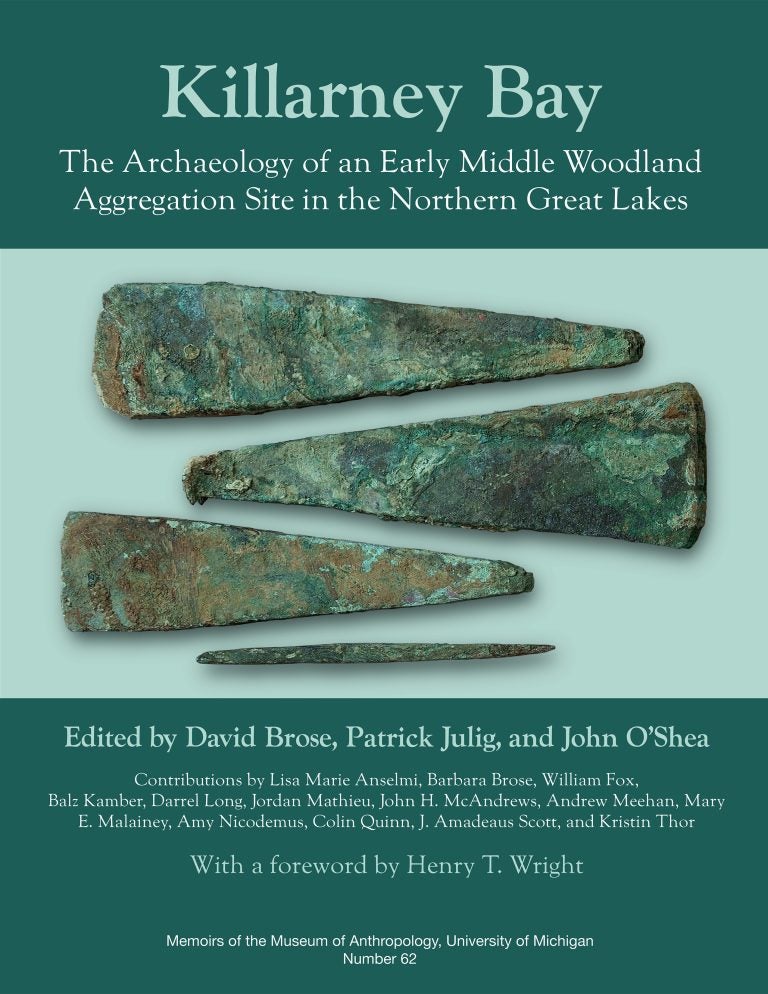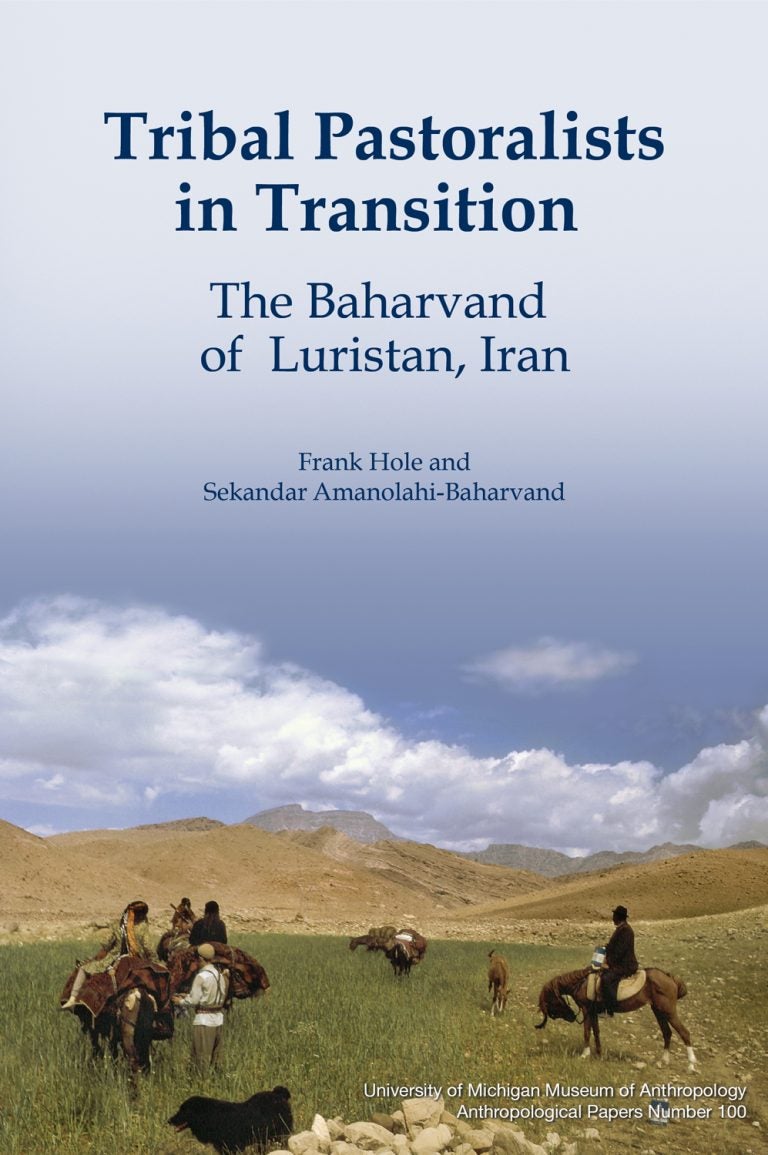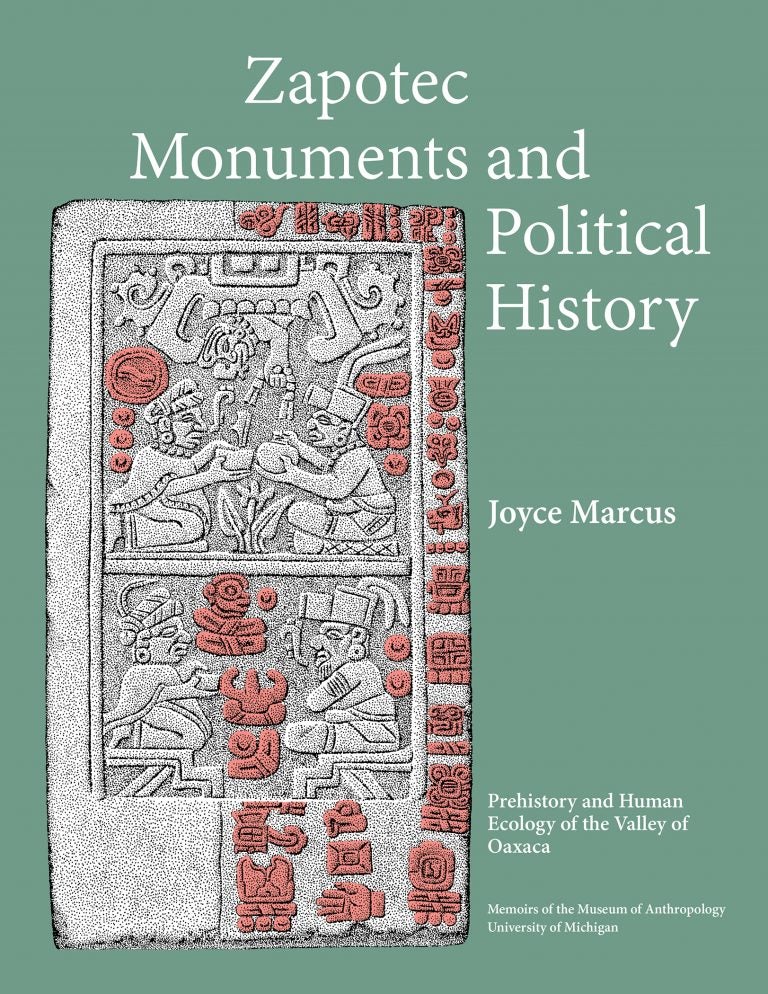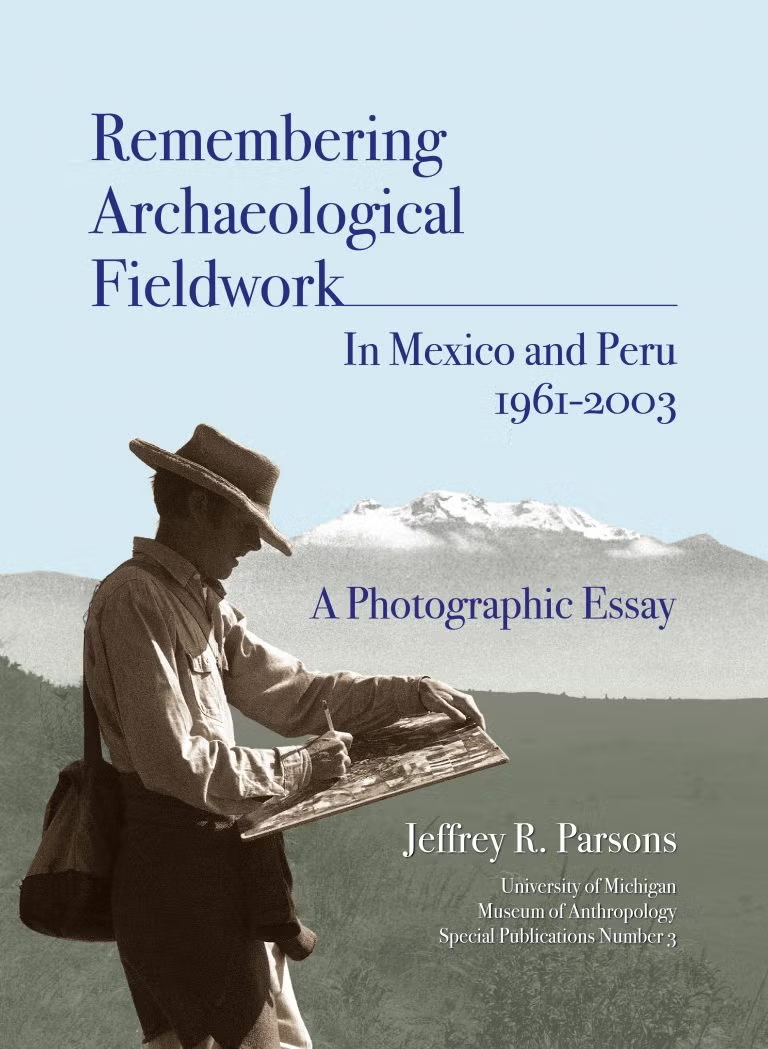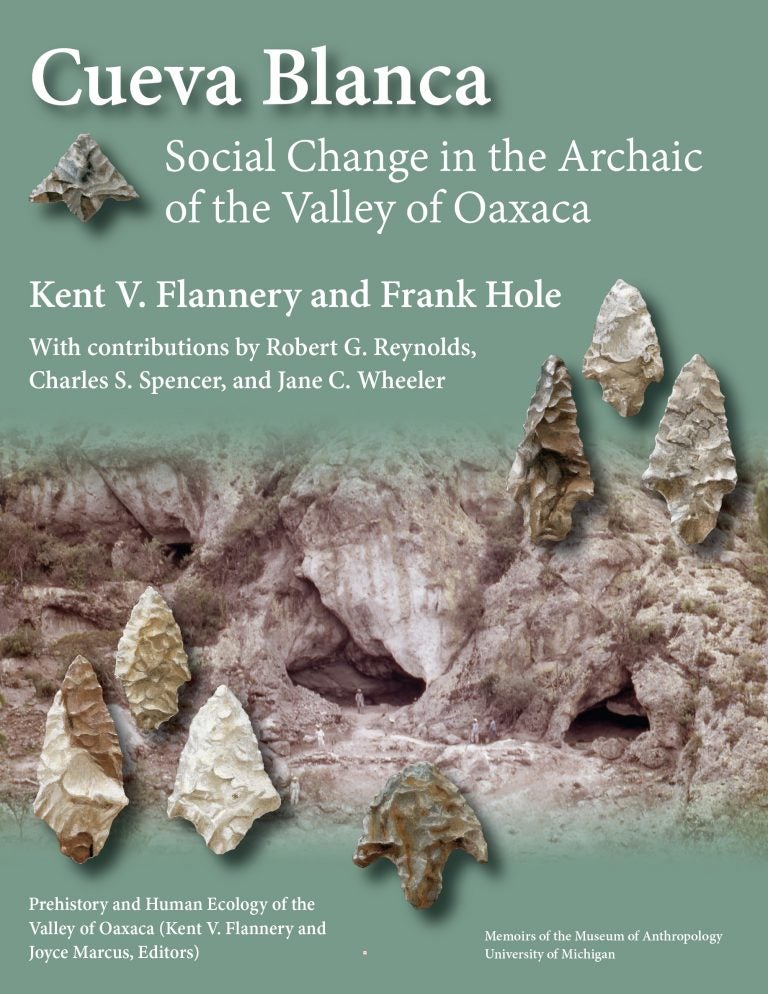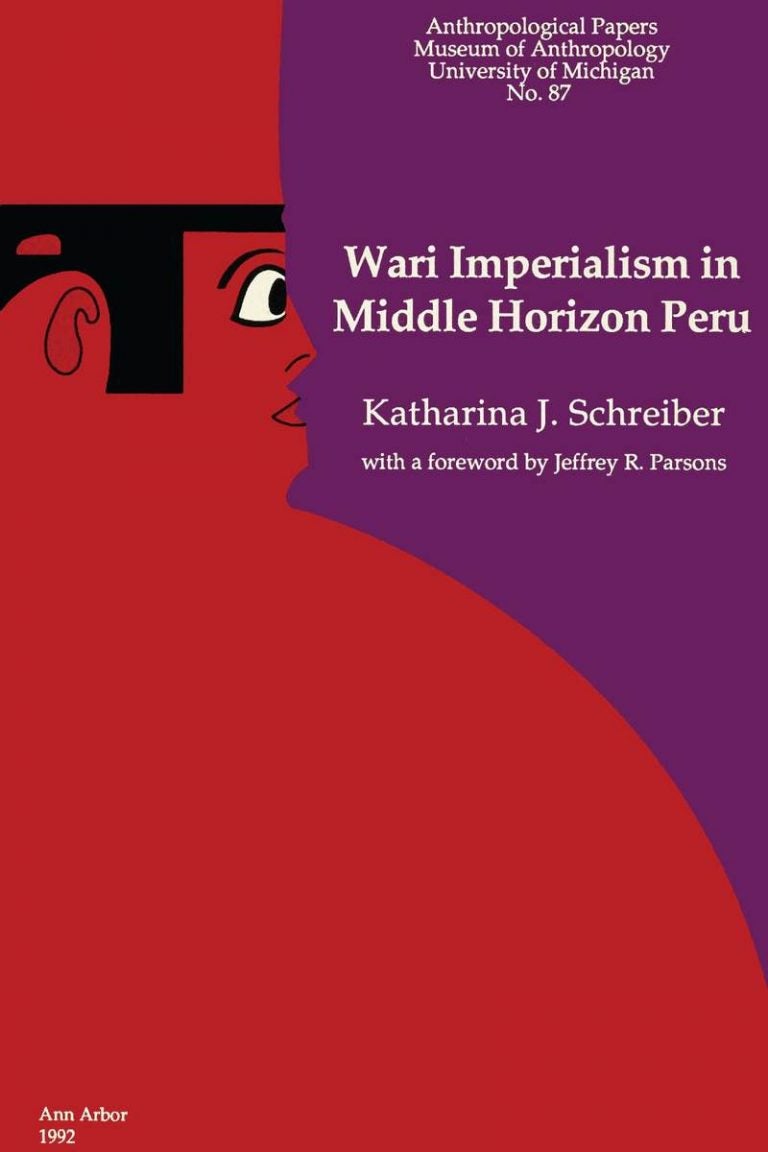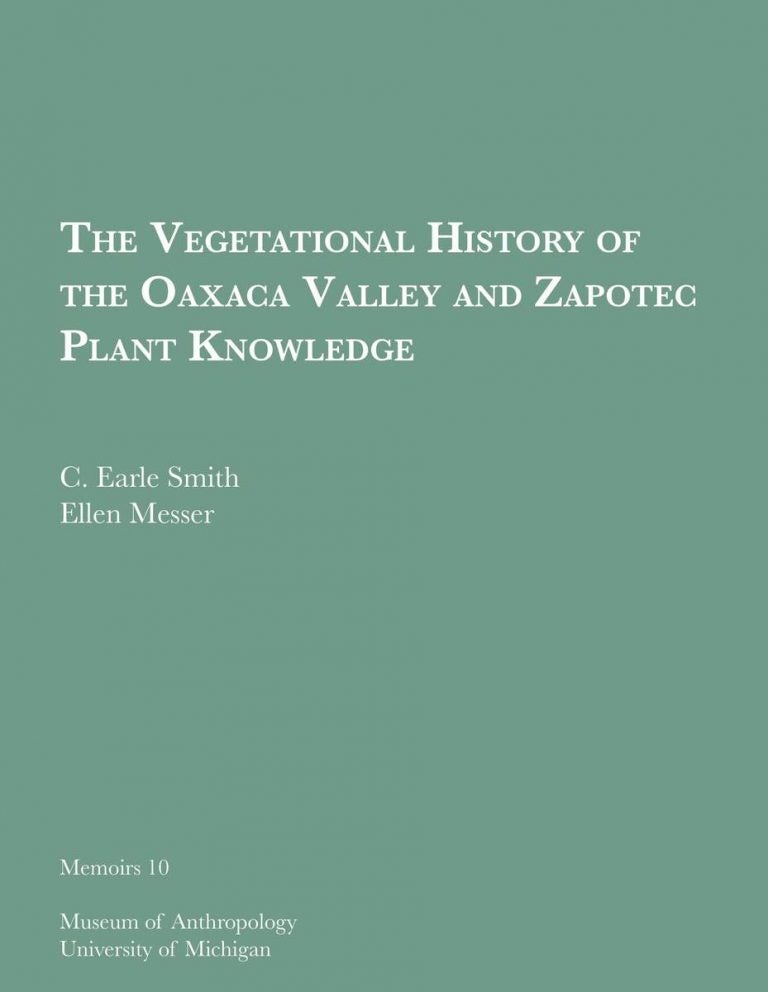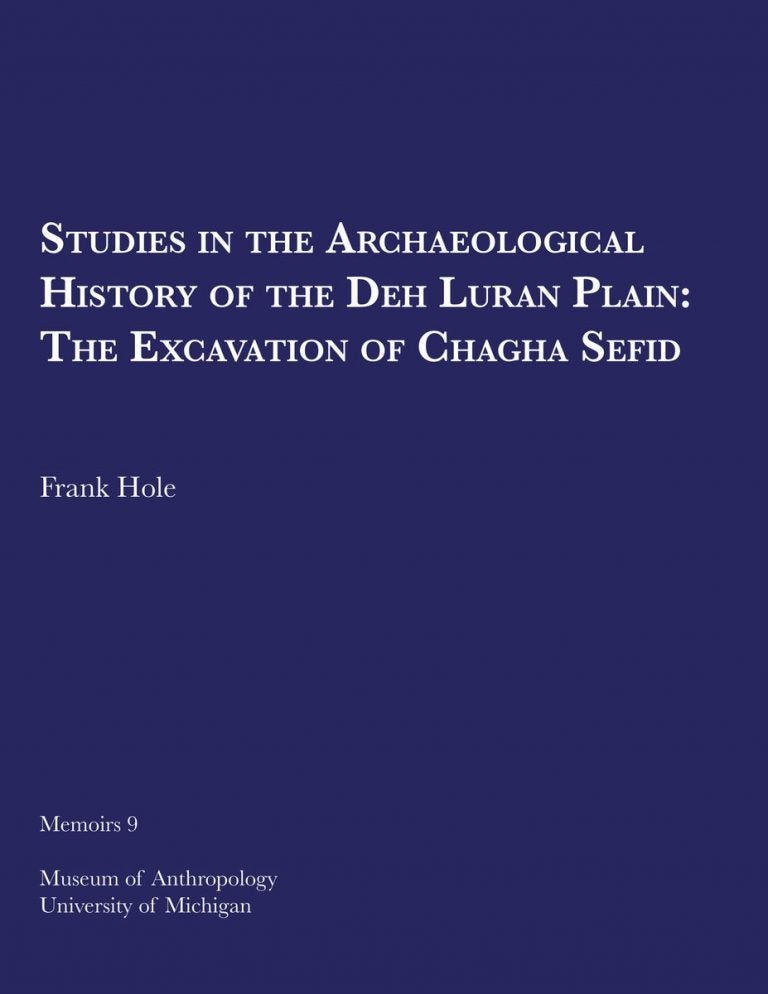Joyce Marcus directed excavations at the site of Cerro Azul in Peru’s Cañete Valley. In two previous volumes she reported on (1) a fish storage facility and the architecture, ceramics, and brewery in an elite residential compound, and (2) the inner workings of the coastal economic system.
In the course of her fieldwork, Marcus came across areas where Late Intermediate (AD 1000–1470) burials had been disturbed by illegal looting. She decided to salvage as much information from these looted burials as she could. Among her discoveries were that men at Cerro Azul were often buried with fishing nets, slings, and bolas, while women were frequently buried with belt looms, workbaskets, cotton and woolen yarn, barcoded spindles, and needlecases. This third Cerro Azul volume provides an inventory of all the burial data that Marcus was able to salvage.
Author: Elizabeth Noll
Editor at University of Michigan Museum of Anthropological Archaeology
Archaeological Investigations in a Northern Albanian Province: Results of the Projekti Arkeologjik i Shkodrës (PASH), Volumes 1 and 2
This hardcover, two-volume set is the result of a five-year excavation and survey project in northern Albania and a multi-year collaboration with the University of Tirana. Volume 1 contains reports on the regional survey and test excavations at three settlements and three tumuli. In Volume 2, the authors describe the artifacts, including chipped stone and pottery from the prehistoric to the post-medieval periods, as well as results of faunal, petrographic, chemical, carpological, and strontium isotope analyses.
These two volumes place northern Albania—and the Shkodër Province in particular—at the forefront of archaeological research in the Balkans.
The Evolution of Settlement Systems in the Region of Vohemar, Northeast Madagascar
In four seasons of intensive archaeological survey in the Vohemar region of Madagascar, researchers found evidence of many settlements dating to different periods: a large port site dating to the fourteenth century (the same era as large cemetery nearby); early estuarine villages of the eighth to tenth centuries; and a rock shelter with microlithic tools.
Killarney Bay: The Archaeology of an Early Middle Woodland Aggregation Site in the Northern Great Lakes
The archaeological site at Killarney Bay, on the northeast side of Georgian Bay in Ontario, Canada, has attracted and mystified archaeologists for decades. The quantities of copper artifacts, exotic cherts, and long-distance trade goods all highlight the importance of the site during its time of occupation. Yet researchers have struggled to date the site or assign it to a particular cultural tradition, since the artifacts and mortuary components do not precisely match those of other sites and assemblages in the Upper Great Lakes. The history of archaeological investigation at Killarney Bay stretches across parts of three centuries and involves field schools from universities in two countries (Laurentian University in Canada and the University of Michigan in the United States). This volume pulls together the results from all prior research at the site and represents the first comprehensive report ever published on the excavations and finds at Killarney Bay. 157 color and b&w photographs and maps and 93 tables.
Tribal Pastoralists in Transition: The Baharvand of Luristan, Iran
Frank Hole and Sekandar Amanolahi-Baharvand
AP 100
In the spring of 1973, the Baharvand tribe from the Luristan province of central western Iran prepared to migrate from their winter pastures to their summer camp in the mountains. Seasonal migration in spring and fall had been their way of life for as long as anyone in the camp could remember. They moved their camp and their animals—sheep, goats, horses, donkeys, and chickens—in order to find green pastures and suitable temperatures. That year, one migrating family in the tribe allowed an outsider to make the trip with them.
Prehistoric Copper Mining in Michigan: The Nineteenth-Century Discovery of “Ancient Diggings” in the Keweenaw Peninsula and Isle Royale
John R. Halsey
AP 99
Explorers in the nineteenth century found many pits and tools along rich copper seams in Michigan’s Upper Peninsula–evidence that prehistoric inhabitants mined copper there for thousands of years. John Halsey, former state archaeologist of Michigan, tells the story of those who discovered the ancient mines in this thorough and engaging tale.
Zapotec Monuments and Political History
Joyce Marcus
M 61
Joyce Marcus, curator of Latin American Archaeology at the University of Michigan Museum of Anthropological Archaeology and Robert L. Carneiro Distinguished University Professor of Social Evolution, excavated in Mexico’s Valley of Oaxaca for decades. Here she draws on her own work and that of other scholars to create an encyclopedic, lavishly illustrated work on the origins and use of Zapotec writing.
Remembering Archaeological Fieldwork in Mexico and Peru, 1961–2003: A Photographic Essay
Jeffrey R. Parsons
SP 3
Hundreds of black and white photographs taken by archaeologist Jeffrey R. Parsons during decades of fieldwork illustrate now-vanished landscapes and archaeological sites of Mexico and Peru.
Cueva Blanca: Social Change in the Archaic of the Valley of Oaxaca
Kent V. Flannery and Frank Hole
M 60
Archaeologists Flannery and Hole excavated a series of Archaic sites in the Valley of Oaxaca, including Cueva Blanca, as part of a project on the prehistory and human ecology of this region of Mexico. This cave yielded artifacts from the Late Pleistocene through the Early Archaic to the Late Archaic.
The Spiro Ceremonial Center: The Archaeology of Arkansas Valley Caddoan Culture in Eastern Oklahoma
James A. Brown
M 29
In Volume I of this two-volume set, James A. Brown reports on and interprets decades of archaeological investigation at the Spiro Ceremonial Center, a major site along the Arkansas River in eastern Oklahoma. In Volume 2, he describes the archaeological collections in detail, covering burials, ceramics, stone tools, pipes, beads, textiles, ornaments, and animal bone. Foreword by James B. Griffin. Contributions by Alice M. Brues, Lyle W. Konigsberg, Paul W. Parmalee, and David H. Stansbery.
Thedford II: A Paleo-Indian Site in the Ausable River Watershed of Southwestern Ontario
D. Brian Deller and Christopher J. Ellis
M 24
A detailed and profusely illustrated analysis of material recovered from this Early Paleo-Indian Parkhill site.
Wari Imperialism in Middle Horizon Peru
Katharina J. Schreiber
AP 87
More than 600 years before the Inka empire ruled the Andean region of South American, during the period known as the Middle Horizon, there were two complex societies: the Tiwanaku and the Wari. In this volume, Katharina J. Schreiber explores the problem of the Middle Horizon through archaeological research in two specific areas: the Carhuarazo Valley and the Jincamocco site. Foreword by Jeffrey R. Parsons.
The Behavioral Ecology of Efe Pygmy Men in the Ituri Forest, Zaire
Robert C. Bailey
AP 86
Robert C. Bailey reports on his observations of sixteen Efe Pygmy men in northeastern Zaire. Bailey lived and worked with the men and their families in the northern Ituri Forest from March 1980 to January 1982—his research was part of a multidisciplinary project called the Ituri Project. Bailey presents data on food production, subsistence behaviors, hunting techniques, relationships between hunters and village dwellers, and other aspects of the Efe society. Foreword by John D. Speth.
Living in a Lean-To: Philippine Negrito Foragers in Transition
Navin K. Rai
AP 80
In this ethnographic study of the Agta, hunter-gatherers in the tropical rain forest of northeastern Luzon in the Philippines, Navin K. Rai documents a traditional society struggling to survive as their forest home is destroyed by outside forces. Foreword by Karl L. Hutterer.
The Inscriptions of Calakmul: Royal Marriage at a Maya City in Campeche, Mexico
Joyce Marcus
T 21
By studying the inscriptions at Calakmul, a large Maya site in the Yucatán Peninsula of southern Mexico, Joyce Marcus identified a sequence of rulers and royal couples and their association with temples and other architecture at the site.
Medicinal Plants of Native America
Daniel E. Moerman
T 19
In this encyclopedia of North American ethnobotany, thousands of native plants are organized by family, genus, use (illness), tribal culture, and common name. Foreword by Richard I. Ford.
Prehistoric Food Production in North America
Richard I. Ford, ed.
AP 75
As Richard I. Ford explains in his preface to this volume, the 1980s saw an “explosive expansion of our knowledge about the variety of cultivated and domesticated plants and their history in aboriginal America.” This collection presents research on prehistoric food production from Ford, Patty Jo Watson, Frances B. King, C. Wesley Cowan, Paul E. Minnis, and others.
The Snyders Mounds and Five Other Mound Groups in Calhoun County, Illinois
David P. Braun, James B. Griffin, and Paul F. Titterington
T 13
In the 1940s, Paul F. Titterington, a doctor and avocational archaeologist, excavated several prehistoric burial mounds in Calhoun County, Illinois. In this report, David Braun and James Griffin present Titterington’s research.
Dietary Reconstruction at Chalcatzingo: A Formative Period in Morelos, Mexico
Margaret J. Schoeninger
T 9
In this work, Margaret Schoeninger investigates the use of bone strontium levels in archaeologists’ reconstruction of diet in prehistoric and recent human populations.
The Biological and Social Analyses of a Mississippian Cemetery from Southeast Missouri: The Turner Site, 23BU21A
Thomas K. Black III
AP 68
The Turner site, in southeast Missouri, was a small Mississippian village that was occupied about AD 1300. Along with two nearby sites, Powers Fort and Snodgrass, it is considered to belong to the Powers Phase. In this volume, Black offers a mortuary analysis of burials found at all three sites.
Economic and Social Organization of a Complex Chiefdom: The Halelea District, Kaua’i, Hawaii
Timothy Earle
AP 63
In the early 1970s, Timothy Earle worked with Marshall Sahlins doing archaeological and ethnohistorical research on the Halelea district in Kaua’i, Hawaii. In this volume, Earle reports on his archaeological and historical research on irrigation in this region. He also discusses modern taro agriculture and community organization. Illustrations by Eliza H. Earle.
The Vegetational History of the Oaxaca Valley and Zapotec Plant Knowedge
C. Earle Smith and Ellen Messer
M 10
In Part I of this volume, C. Earle Smith draws on years of survey in the Oaxaca Valley and archaeological discoveries of plant remains in the region to create a portrait of the valley’s original wild vegetation, previous to human settlement. In Part 2, Ellen Messer provides the results of her ethnobotanical study of the Zapotec residents of Mitla, a town in the southern highlands of the Valley of Oaxaca. Over the course of four years, she studied with local residents to learn the names and uses for wild plants and agricultural plants in the area.
Late Prehistoric Bison Procurement in Southeastern New Mexico: The 1977 Season at the Garnsey Site
John D. Speth and William J. Parry
T 8
Archaeologists John D. Speth and William J. Parry present the results of the first season of excavation at the Garnsey site, a bison kill site in southeastern New Mexico.
For the Director: Research Essays in Honor of James B. Griffin
Charles E. Cleland, ed.
AP 61
In 1975, James B. Griffin retired as director of the University of Michigan Museum of Anthropology. During his three decades as director and professor, he had become one of the leading archaeologists in North America and had tremendous influence over the next generation of archaeological research. To honor the man and his work, nineteen scholars contributed essays to this volume.
Studies in the Archaeological History of the Deh Luran Plain: The Excavation of Chagha Sefid
Frank Hole
M 9
In 1968 and 1969, Frank Hole directed the excavation of Chagha Sefid, a prehistoric site on the Deh Luran plain in Iran occupied from about 7000 to 3500 BC. This volume contains an analysis of the architecture, burials, and artifacts uncovered on the site. Contributions by M. J. Kirkby and Colin Renfrew.

